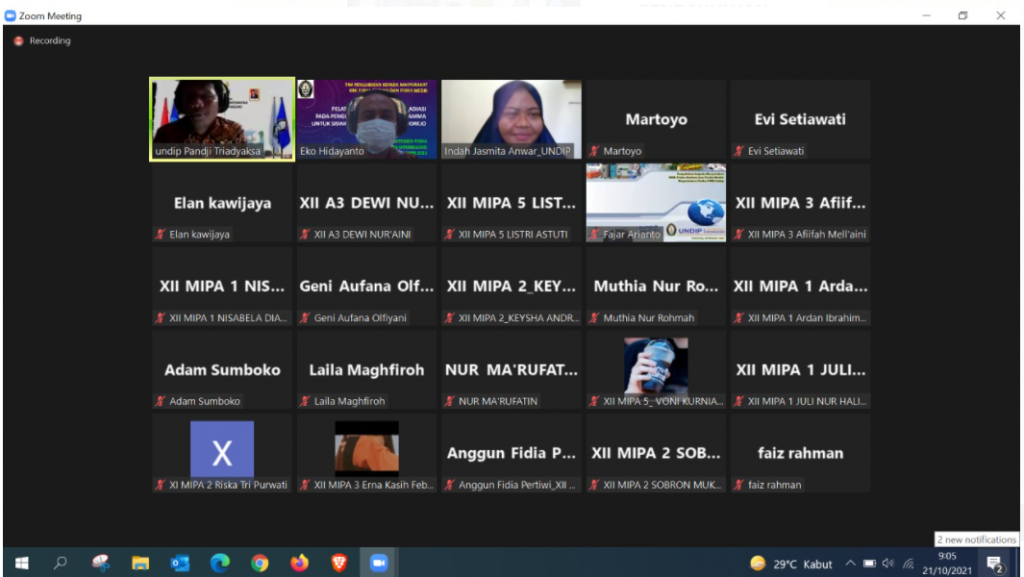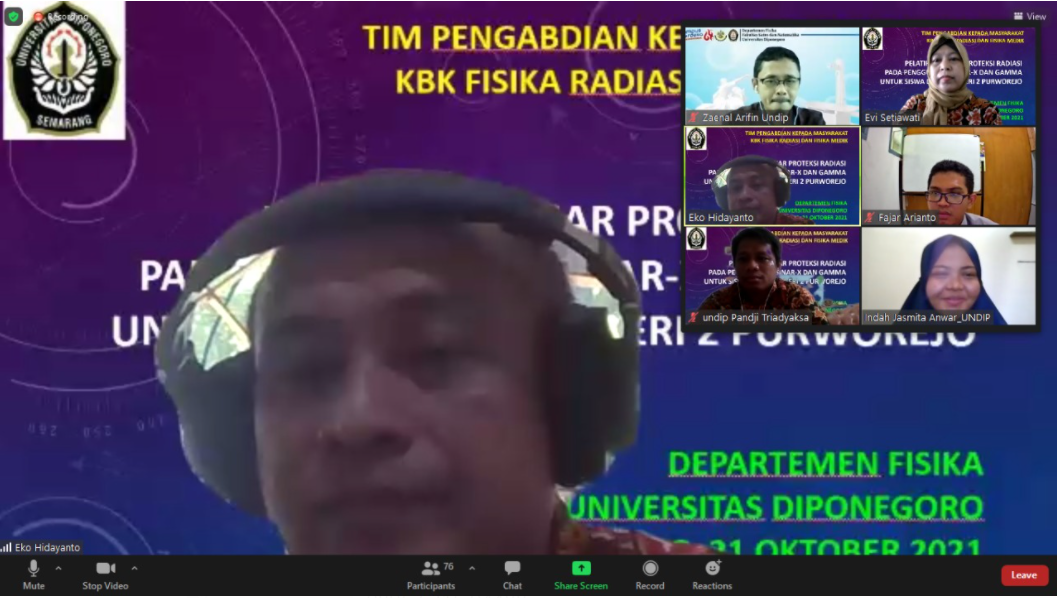Life that is lived every day can not be separated from radiation, be it radiation derived from nature or man-made radiation that is used in the fields of technology, industry, health, communication, food, and so on. Radiation will have the best benefits for human well-being if used properly and follow the established rules. But if radiation is misused and heeds the rules of radiation protection and safety, then radiation can be a disaster for humans.
Radiation is the process of transferring or transferring energy either through media or space in the form of electromagnetic waves. There is radiation that is not dangerous because the energy is small and can not penetrate a medium or small translucent power (such as alpha and beta rays), there is also radiation that is dangerous because of its large energy and able to penetrate the media even the human body to the wall that can also be passed (e.g. X-rays and gamma rays). To provide protection to this radiation, especially harmful ionizing radiation, it needs a safety program known as radiation protection.
In order to provide early insight and information about the dangers of radiation and its protection, the Group of Expertise (KBK) of Radiation Physics and Medical Physics from the Department of Physics FSM UNDIP on Thursday (21/10) held "Basic Radiation Protection Training on the Use of X-Rays and Gamma for Students at State High School 2 Purworejo" online through Zoom Meeting.
The event was opened by Dr. Eng. Eko Hidayanto as the managing chairman of Community Service by introducing the study program Physics in general and KBK Physics Radiation and Medical as well as the activities of Tri Darma College in terms of education, research and community service that has been and continues to be developed by Physics Undip. On this occasion, Eko Hidayanto also explained the achievements of Undip Physics with various achievements both at the national and international levels.
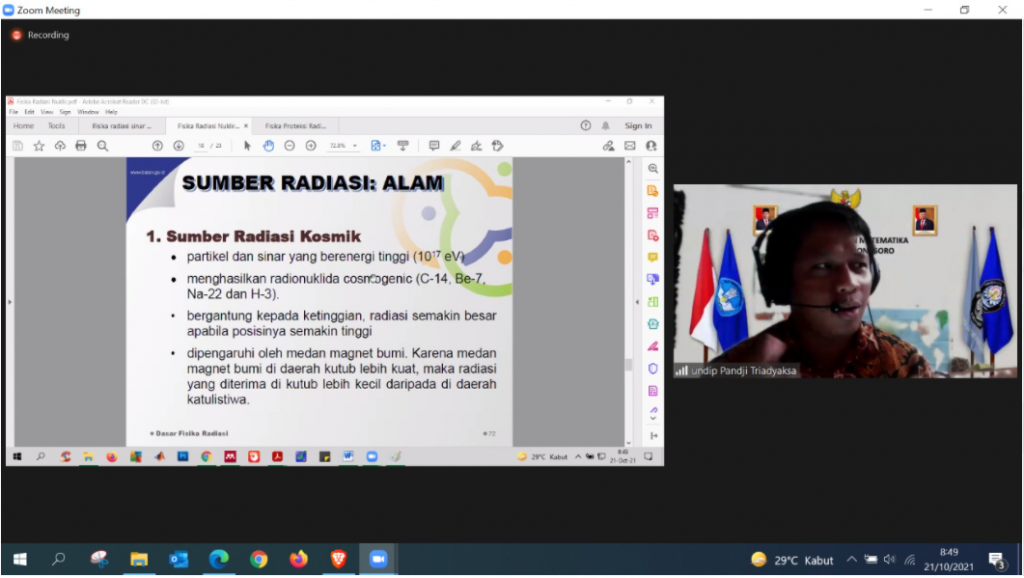
Then the event continued with the presentation of material by Pandji Triadyaksa, M.Sc. who explained about the radiation protection system. In the use of radiation, to ensure safety for working people / radiation officers, patients (people subject to radiation) and others around it, it is necessary to pay attention to the principles of philosophy in the use of radiation. The first is that the use of radiation should have more benefit than its disadvantage (principle of justification). Second, if you have to use radiation, use it at the lowest possible dose (optimizationprinciple). Then the third needs to be given a limit on the dose that must be received(limitation). In terms of radiation protection there are 3 things that must be considered, namely the timefactor, by minimizing the time as little as possible when it comes to radiation exposure, distancefactor, by making a distance as far as possible with radiation / source, and protection / shield by using the right protection for certain types of radiation, missal with a material coated in lead (Pb) which is a good absorbent for radiation.
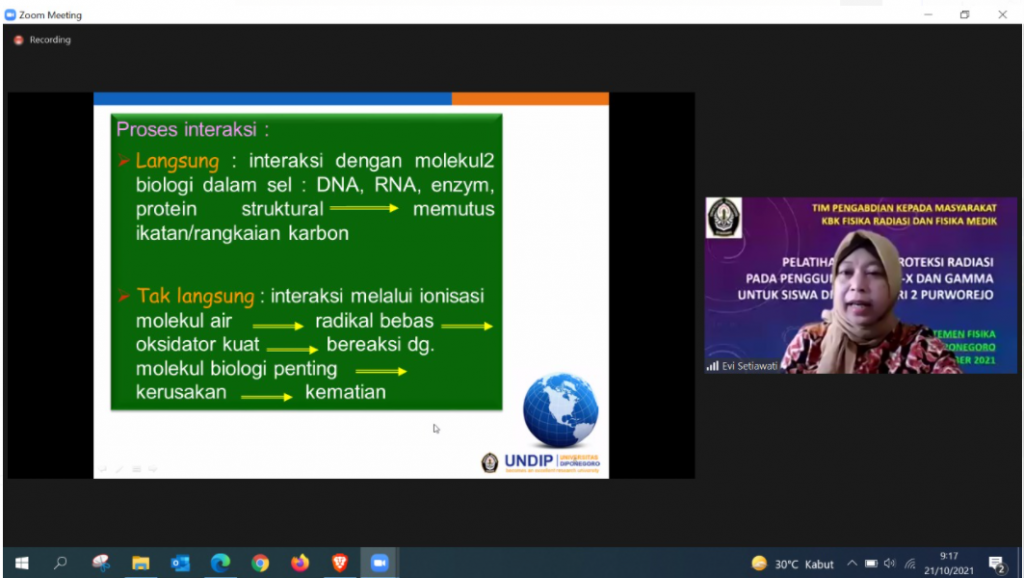
The next material was delivered by Evi Setiawati, M.Si. explaining about the biological effects that may arise on the body if exposed to ionizing radiation. That effect can occur acutely or immediately after receiving radiation or the effects that arise are delayed from a matter of days to several years after exposure to radiation. The effects of radiation can also be seen from the type of cells, namely somatic cells and genetic cells. As for the purposes of radiation protection, the effect of radiation can be divided into determinical effects and stochastic effects. The effect of determicintisk will arise if the dose given exceeds the threshold dose, and will get worse as the dose increases. Stochastic effects are random or random.
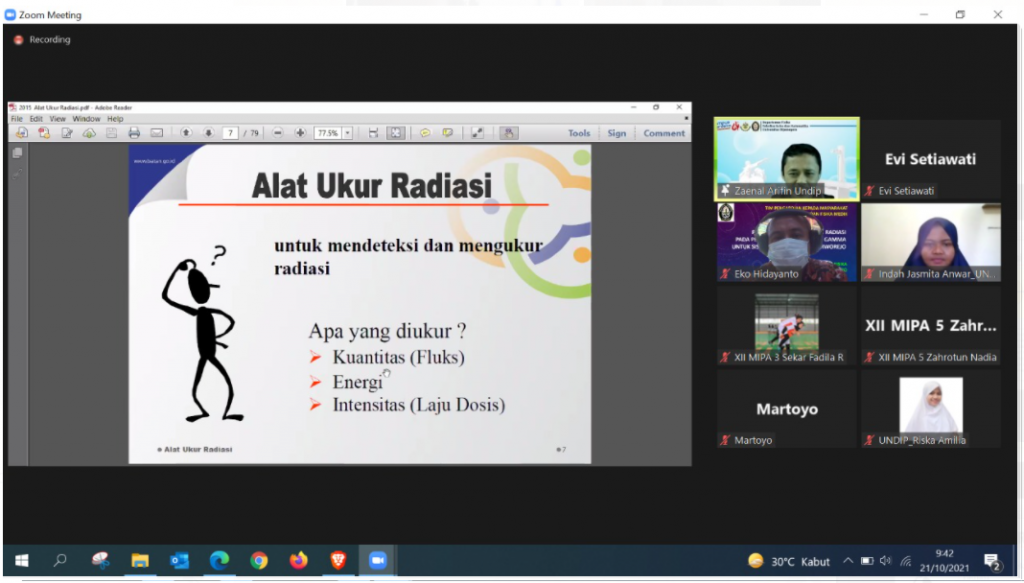
The last material was presented by Zaenal Arifin, M.Si. on radiation measurements to monitor how much radiation levels emitted both beta, gamma and X-ray radiation. A radiation can be recognized and measured in quantity using a device called a radiation detector. The usual types of radiation detectors are gas filling detectors, distillation detectors and solid material detectors (usually from semiconductor materials). The use of radiation measuring systems is commonly used for radiation protection activities and for nuclear radiation application/research activities. Measuring instruments for radiation protection are divided into three types: individual dosimeters, surveymeters, and contamination monitors. As for research in the laboratory commonly used countering systems and spectroscopy.
Finished the presentation of the material continued discussion with the students of State High School 2 Purworejo. Participants are quite enthusiastic and excited to ask about the material delivered by the source. On that occasion also the speaker gave some questions that can be answered correctly by the students, then the students who ask and answer questions are given doorprize in the form of internet data packages. The event was attended online by about 130 students and teachers of State High School 2 Purworejo. (PUBLIC RELATIONS)
